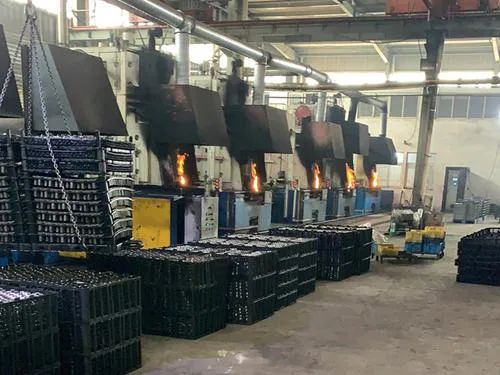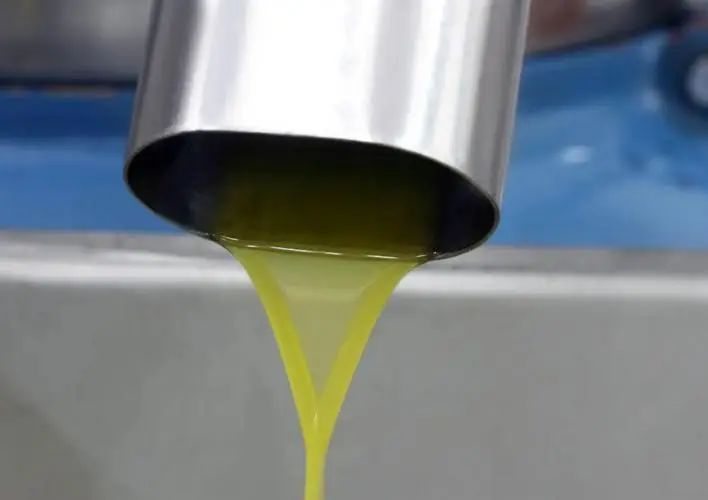Water in quenching oil is the greatest hazard to normal quenching operation, and also a hidden danger of fire. However, in actual production, it seems that people do not pay enough attention to quality and fire accidents occur from time to time. In this paper, the author first analyzes the harm of water in oil combined with cooling curve, and introduces qualitative and quantitative measurement methods of water content. Finally, the possible causes of water in oil are analyzed, and the countermeasures to be taken are proposed.

1. Hazards of water in oil The water content in quenching oil is mainly harmful in the following three aspects. 1) Deteriorate cooling performance Water in the oil affects the cooling performance of the oil. Generally speaking, the cooling speed of conventional quenching oil is increased, while for fast quenching oil, the cooling speed is decreased because the water will dissolve the quick refrigerant. In the high temperature stage, the cooling rate of fast quenching oil containing water is lower than that of fast quenching oil without water. In the low temperature convection stage, the cooling rate is just the opposite, and the cooling rate of the rapid quenching oil containing water is faster than that of the oil without water. Water in oil not only changes the cooling rate of oil, but also makes the maximum cooling rate move downward due to the extension of steam film stage. 2) Increased spill and fire risk The oil contains water, which is heated and vaporized to cause a sharp increase in volume and sudden boiling, which obviously increases the fire hazard. If the water content is large and the oil has formed a stratified state, the sudden vaporization of water may cause explosion in the absence of circulation. 3) Accelerate oil aging Oil containing water will accelerate the aging of oil. The main reasons are: ① When the oil contains water, the additives in the oil will be emulsified, precipitated or hydrolyzed and lose their effectiveness. The oil contains antioxidant to slow down aging, quick cooling agent to increase cooling speed and brightener to increase surface brightness. Therefore, for the quenching of workpieces with high surface quality requirements, more attention should be paid to monitoring the content. When the surface quality deteriorates, check whether the quenching oil contains water. ② Under the action of emulsified water and temperature in the oil, carbon particles (black) will hydrolyze and then react with metal particles to generate metal carbide particles. Metal carbide particles will generate acid due to oxidation, which will promote the formation of oil sludge and accelerate the aging of oil.

2. Detection of water content in oil Practice has proved that when the water content in the oil is 0.03%, it will have an impact on the surface brightness of the steel after quenching. When the water content is more than 0.05%, the quenching deformation of the workpiece will increase. When the water content reaches about 0.10%, it is possible to make the workpiece appear cracks during quenching. When the water content is more than 1%, there is danger of blistering and sudden boiling. Generally speaking, attention should be paid when the water content in oil exceeds 0.02%. 3. Treatment measures for water in oil For water contained in oil, first find out the cause and take measures to thoroughly eliminate it. Condensate in the air may condense into oil, but in fact, although the condensation varies with the humidity in different places, it is about 0.04% at most when reaching equilibrium. Therefore, when the moisture content is slightly high, other reasons should be carefully investigated. Other possible reasons mainly include: ① Heat exchanger leaks in. Quenching oil in general plants is cooled by water. Iron cooling pipes will leak due to corrosion over time. In addition, when the water temperature is within the range of 30~40 ℃, it is easy to deposit scale and block the pipeline. It is easy to cause pipeline leakage when the pipeline is irrigated (usually with corrosive medium such as hydrochloric acid). ② The water in other parts adjacent to the quenching oil tank leaks in. For example, when the cooling water of the air cooling motor on the upper part of the multi-purpose furnace pours in, some parts use water-based medium as the working medium, such as fire-resistant hydraulic fluid, and mix it with oil; ③ The workpiece brings in moisture. For example, the water quenching oil cold quenching method is adopted, the water brought in by the workpiece from the water tank and the water brought in by the workpiece from the cleaning solution with water-based cleaning agent. ④ Improper storage of quenching oil or unqualified quenching oil containing water. ⑤ Other accidents, such as rain leakage or fire fighting. Moisture in oil can cause many adverse effects. Therefore, try to remove the water in the oil. There are usually the following methods. ① Heat for dehydration. If the oil flash point is allowed, heat the quenching oil containing water to 100~120 ℃, and start stirring for about 1h until the bubbles disappear. However, it should be noted that due to the oxidation and decomposition of the oil during use, the light fraction increases and the flash point decreases. It is better to measure the flash point before heating. The heating temperature should be at least 30~50 ℃ lower than the flash point. ② Precipitation dehydration makes the oil static for a long time. The water will be deposited at the bottom of the oil tank and then discharged from the bottom, but this depends on the design of the oil tank. The bottom of the oil tank of the general multipurpose furnace can be drained, and there is a corresponding moisture sensing indicator. ③ Centrifugal dewatering The specific gravity of water and oil is different, so the water can be removed under the action of centrifugal force. This method is often used in the regeneration of waste oil. ④ Filtration dehydration Use the adsorption of filter media such as clay to absorb water in oil. However, effective additives in oil may also be filtered out when water is filtered out. Pay attention to selecting filter media and contacting oil supplier. The cooling performance test shall be carried out after the oil is dehydrated. The cooling curve shown in Figure 5 is the cooling curve measured after the water containing 0.25% is heated and dehydrated It can be seen from the figure that the high temperature cooling speed is accelerated after water flushing, while the convection cooling speed is slowed down, which will be beneficial to ensure hardening and reduce deformation and cracking.

![]() November 24, 2022
November 24, 2022





